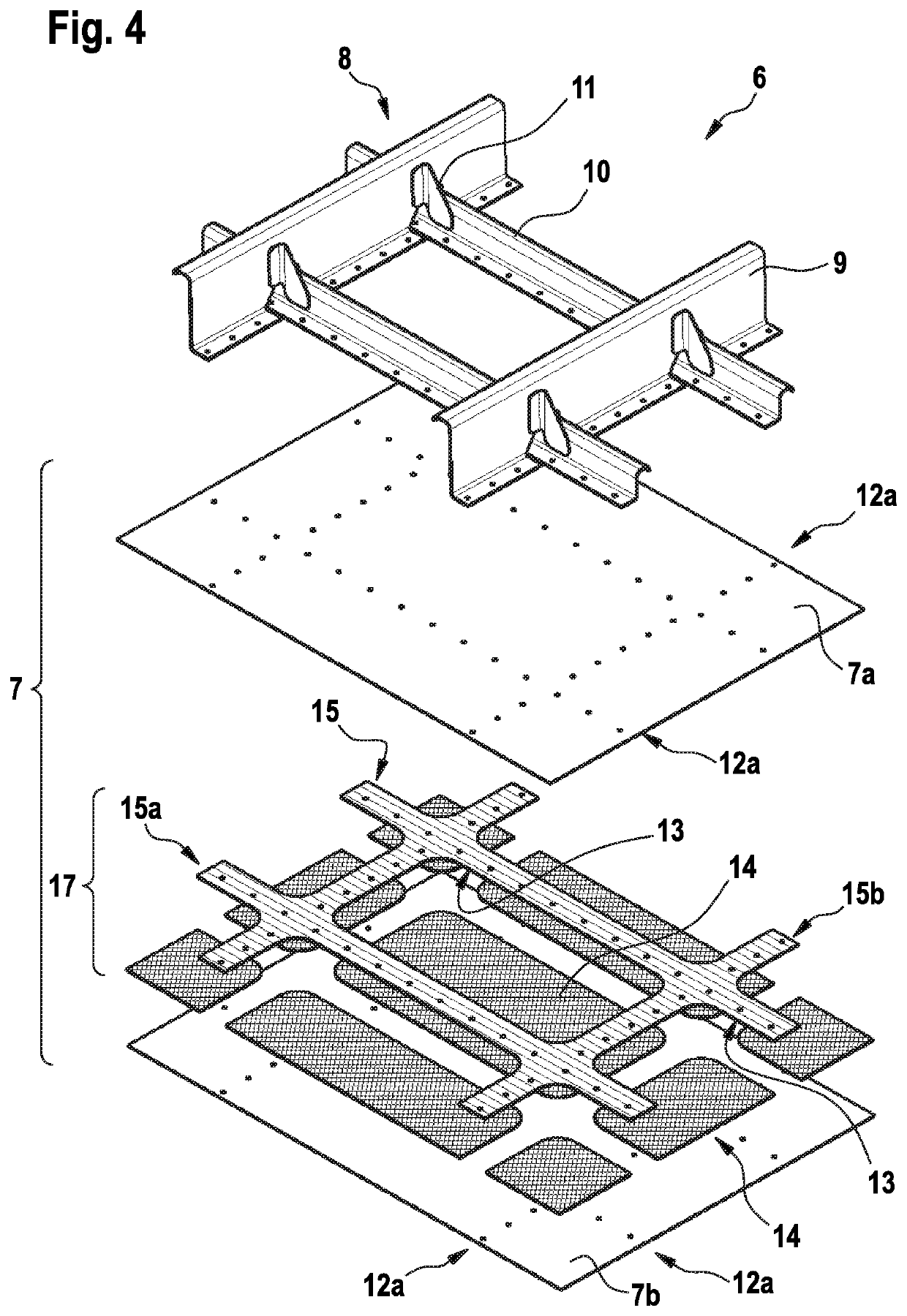Rotary wing aircraft with a fuselage that comprises at least one structural stiffened panel
a technology of structural stiffness and fuselage, which is applied in the direction of rotorcraft, weight reduction, transportation and packaging, etc., can solve the problems of affecting the underlying weight efficiency of a given rotary wing aircraft, contributing noticeably to noise radiation, and dissipating mechanical energy, so as to improve the noise and vibration damping characteristics and increase the structural weight efficiency
- Summary
- Abstract
- Description
- Claims
- Application Information
AI Technical Summary
Benefits of technology
Problems solved by technology
Method used
Image
Examples
Embodiment Construction
[0059]FIG. 1 shows an aircraft 1 that is exemplarily illustrated as a rotary wing aircraft and, more particularly, as a helicopter. Thus, for purposes of simplicity and clarity, the aircraft 1 is hereinafter referred to as the “helicopter”1.
[0060]Illustratively, the helicopter 1 comprises a fuselage 2 that is connected to a landing gear 1f and defines a cabin 2a and a rear fuselage 2b. The rear fuselage 2b is connected to a tail boom 3.
[0061]According to one aspect, the fuselage 2 is at least partly implemented on the basis of a semi-monocoque design and comprises at least one skin-stiffened panel, i. e. at least one structural stiffened panel 6. The latter is exemplarily and representatively described in detail below with respect to FIG. 2 to FIG. 4.
[0062]Illustratively, the helicopter 1 further comprises at least one multi-blade main rotor 1a for providing lift and forward or backward thrust during operation. The at least one multi-blade main rotor 1a comprises a plurality of roto...
PUM
 Login to View More
Login to View More Abstract
Description
Claims
Application Information
 Login to View More
Login to View More - R&D
- Intellectual Property
- Life Sciences
- Materials
- Tech Scout
- Unparalleled Data Quality
- Higher Quality Content
- 60% Fewer Hallucinations
Browse by: Latest US Patents, China's latest patents, Technical Efficacy Thesaurus, Application Domain, Technology Topic, Popular Technical Reports.
© 2025 PatSnap. All rights reserved.Legal|Privacy policy|Modern Slavery Act Transparency Statement|Sitemap|About US| Contact US: help@patsnap.com



